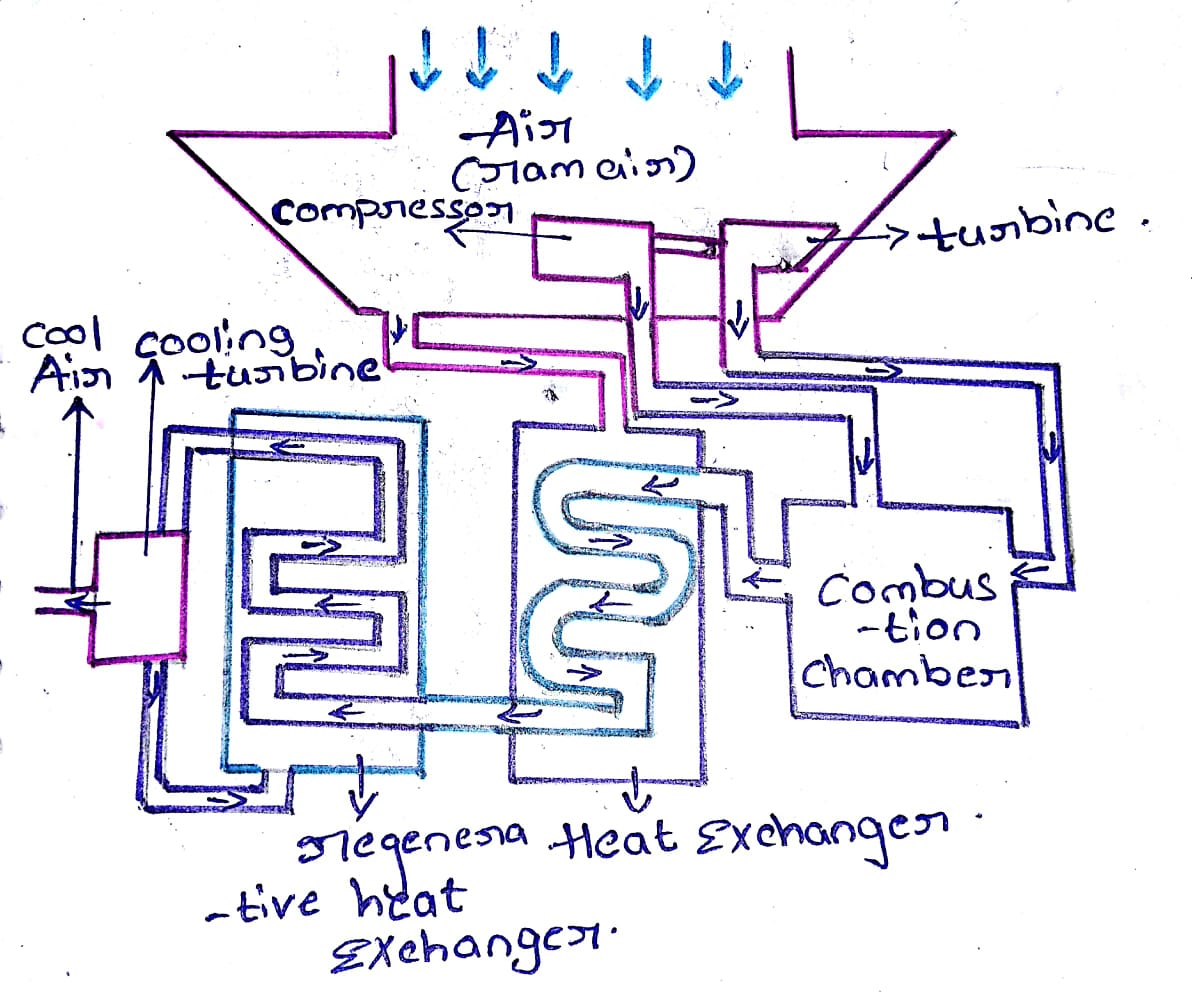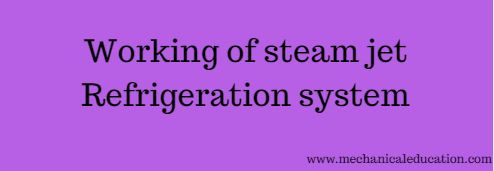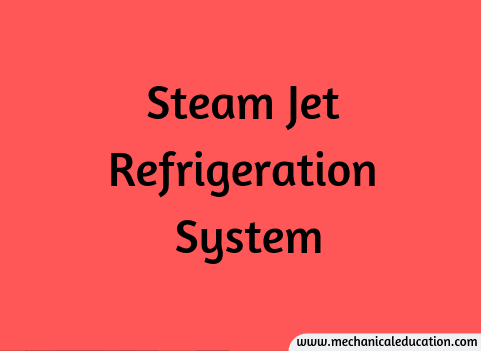What is Automatic Expansion Valve?
An Automatic Expansion Valve (AEV) is a type of refrigeration or air conditioning valve designed to automatically regulate the flow of refrigerant into the evaporator coil based on system conditions. The primary function of the automatic expansion valve is to maintain a stable and optimal superheat in the evaporator.
Here are key features and functions of an Automatic Expansion Valve
- Regulation of Refrigerant Flow:
- The AEV is responsible for controlling the flow of refrigerant from the high-pressure side (condenser) to the low-pressure side (evaporator). It modulates the flow rate based on the heat load and temperature conditions in the evaporator.
- Maintaining Superheat:
- One of the crucial roles of the AEV is to maintain a specific superheat in the evaporator. Superheat is the temperature rise of the refrigerant vapor above its saturation temperature. By controlling superheat, the AEV ensures efficient heat absorption in the evaporator.
- Sensing Element:
- Automatic Expansion Valves typically incorporate a sensing element, often a bulb filled with a temperature-sensitive refrigerant, connected to the suction line or evaporator outlet. This sensing element provides feedback on the temperature conditions in the evaporator.
- Adjustable Opening:
- The AEV has an adjustable valve opening that is automatically controlled based on the feedback from the sensing element. This opening regulates the flow of refrigerant into the evaporator, preventing overfeeding or underfeeding.
- Internal Pressure Drop:
- The valve introduces an internal pressure drop that assists in the expansion of the refrigerant as it enters the evaporator. This pressure drop contributes to the phase change of the refrigerant from liquid to vapor.
- Efficiency Improvement:
- By maintaining optimal superheat and regulating refrigerant flow, the AEV helps improve the overall efficiency of the refrigeration or air conditioning system. Efficient heat absorption in the evaporator is essential for effective cooling.
- Compatibility with Variable Load Conditions:
- AEVs are well-suited for systems with variable load conditions. They can dynamically adjust the refrigerant flow in response to changes in cooling demand, making them suitable for a range of applications.
- Electronic Expansion Valve (EEV):
- In some modern systems, Automatic Expansion Valves may be electronic, known as Electronic Expansion Valves (EEVs). Electronic versions utilize electronic controls and sensors for more precise and rapid adjustments.
- Diagnostic Capabilities:
- Some AEVs may include diagnostic features, allowing the system to monitor and report issues related to refrigerant flow or temperature conditions. This contributes to easier troubleshooting and maintenance.
- Application Variety:
- Automatic Expansion Valves are used in a wide range of refrigeration and air conditioning applications, including commercial refrigeration units, air conditioning systems, heat pumps, and industrial cooling processes.
The Automatic Expansion Valve is a critical component in refrigeration systems, contributing to the effective and efficient operation of the evaporator and the overall cooling process.
Construction of Automatic Expansion Valve
The construction of an Automatic Expansion Valve (AEV) involves several key components that work together to regulate the flow of refrigerant into the evaporator coil. While the specific design may vary among manufacturers and based on the intended application, here are the fundamental components typically found in the construction of an AEV:
- Valve Body:
- The valve body serves as the main housing for the internal components of the AEV. It provides structural support and houses the components responsible for controlling refrigerant flow.
- Adjustable Valve Opening:
- An adjustable valve opening, often controlled by a diaphragm or other mechanism, regulates the flow of refrigerant into the evaporator. This opening can be automatically adjusted based on system conditions.
- Sensing Element:
- The sensing element is a temperature-sensitive device, commonly a bulb filled with a refrigerant, that is connected to the evaporator coil or suction line. It senses the temperature conditions in the evaporator and provides feedback to the valve.
- Diaphragm (or Bellows):
- The diaphragm is a flexible membrane that responds to the pressure changes caused by the sensing element. As the temperature in the evaporator changes, the diaphragm adjusts the valve opening to maintain optimal superheat.
- Adjustment Spring:
- Some AEVs include an adjustment spring that provides a counterforce against the diaphragm’s movement. The spring helps maintain stability and allows for adjustments within a specified range.
- Valve Seat:
- The valve seat is the surface against which the diaphragm or other closing mechanism makes contact to control the flow of refrigerant. It helps create a seal when the valve is closed.
- Orifice or Metering Device:
- An orifice or a metering device within the AEV controls the rate at which refrigerant is allowed to flow into the evaporator. This component contributes to the expansion of the refrigerant.
- External Connections:
- The AEV has inlet and outlet connections for attaching refrigerant lines. These connections allow the valve to be integrated into the overall refrigeration or air conditioning system.
- Equalizer Tube:
- In some AEVs, an equalizer tube connects the low-pressure side of the system to the diaphragm chamber. This tube helps balance pressures and ensures accurate valve operation.
- Adjustment Mechanism:
- The adjustment mechanism allows for fine-tuning of the valve opening based on system requirements. This mechanism may be electronic in the case of Electronic Expansion Valves (EEVs) or manually operated in traditional AEVs.
It’s important to note that some AEVs may have additional features, such as solenoid valves for more precise control, electronic sensors, and diagnostic capabilities. The construction of AEVs can vary based on the specific design and technology employed by different manufacturers to achieve optimal performance in refrigeration and air conditioning systems.
Working of Automatic Expansion Valve
The working of an Automatic Expansion Valve (AEV) involves the dynamic regulation of refrigerant flow into the evaporator coil based on system conditions. The primary goal is to maintain a stable and optimal superheat in the evaporator, ensuring efficient heat absorption. Here’s a step-by-step explanation of how an AEV operates:
- Sensing Temperature:
- The AEV includes a sensing element, often a bulb filled with a temperature-sensitive refrigerant, that is placed in the suction line or at the outlet of the evaporator. This element continuously senses the temperature of the refrigerant leaving the evaporator.
- Pressure Changes:
- As the temperature in the evaporator changes due to variations in the heat load, the refrigerant within the sensing element expands or contracts, causing pressure changes. These pressure changes are transmitted to the diaphragm or other closing mechanism within the AEV.
- Diaphragm Movement:
- The diaphragm, which is a flexible membrane inside the AEV, responds to the pressure changes. The movement of the diaphragm is proportional to the pressure changes detected by the sensing element.
- Adjustment of Valve Opening:
- The diaphragm is connected to the valve opening mechanism. As the diaphragm moves, it adjusts the size of the valve opening. This adjustment controls the flow of refrigerant into the evaporator, preventing overfeeding or underfeeding.
- Maintaining Optimal Superheat:
- By dynamically adjusting the valve opening, the AEV aims to maintain a specific superheat in the evaporator. Superheat is the temperature rise of the refrigerant vapor above its saturation temperature. Maintaining optimal superheat ensures efficient heat absorption and prevents issues such as liquid refrigerant entering the compressor.
- Expansion of Refrigerant:
- The refrigerant flows through the AEV’s orifice or metering device, causing a pressure drop and allowing the refrigerant to expand. This expansion is a crucial part of the refrigeration cycle, contributing to the phase change from liquid to vapor.
- Balancing Pressures:
- Some AEVs may include an equalizer tube that connects the low-pressure side of the system to the diaphragm chamber. This tube helps balance pressures and ensures that the diaphragm responds accurately to changes in evaporator conditions.
- Continuous Adjustment:
- The AEV continuously adjusts the valve opening based on the feedback from the sensing element. This dynamic adjustment allows the valve to respond to changes in the system, providing precise control over the refrigerant flow.
- Compatibility with Variable Load Conditions:
- AEVs are designed to work well in systems with variable load conditions. They can adapt to changes in cooling demand, making them suitable for a wide range of applications.
- Electronic Expansion Valves (EEVs):
- In modern systems, Electronic Expansion Valves (EEVs) are a type of AEV that utilizes electronic controls for even more precise and rapid adjustments. EEVs often include sensors and electronic feedback mechanisms for enhanced control.
The continuous and automatic adjustment of the expansion valve ensures that the refrigeration or air conditioning system operates efficiently under varying conditions, contributing to effective cooling performance.
Automatic Expansion Valve Features
Automatic Expansion Valves (AEVs) come with several features that contribute to their efficient and automatic operation in refrigeration and air conditioning systems. The specific features may vary depending on the manufacturer and the design of the valve, but common features include:
- Sensing Element:
- AEVs incorporate a sensing element, typically a bulb filled with a temperature-sensitive refrigerant. This element is strategically placed in the suction line or at the outlet of the evaporator to continuously sense the temperature conditions.
- Dynamic Flow Regulation:
- The primary feature of an AEV is its ability to dynamically regulate the flow of refrigerant into the evaporator based on real-time temperature feedback. This dynamic adjustment helps maintain optimal superheat.
- Automatic Adjustments:
- AEVs automatically adjust the valve opening in response to changes in temperature and pressure conditions in the evaporator. This automation allows the valve to adapt to varying heat loads and ambient conditions.
- Maintaining Optimal Superheat:
- The main goal of an AEV is to maintain a specific superheat in the evaporator. This ensures that the refrigerant absorbs the right amount of heat, preventing issues such as liquid refrigerant entering the compressor.
- Adjustable Opening Mechanism:
- AEVs have an adjustable valve opening mechanism that responds to the movement of the sensing element. The opening is adjusted to control the flow rate of refrigerant into the evaporator.
- Diaphragm or Bellows:
- Many AEVs include a diaphragm or bellows as a flexible membrane that responds to pressure changes detected by the sensing element. The movement of the diaphragm contributes to adjustments in the valve opening.
- Equalizer Tube (Optional):
- Some AEVs incorporate an equalizer tube to balance pressures. This tube connects the low-pressure side of the system to the diaphragm chamber, ensuring accurate valve operation.
- Efficient Heat Absorption:
- By maintaining optimal superheat and regulating refrigerant flow, AEVs contribute to efficient heat absorption in the evaporator. This is essential for effective cooling performance.
- Compatibility with Variable Load Conditions:
- AEVs are designed to work well in systems with variable load conditions. They can adapt to changes in cooling demand, making them suitable for a variety of applications.
- Electronic Expansion Valve (EEV) Technology:
- Some AEVs are electronically controlled and are known as Electronic Expansion Valves (EEVs). EEVs may include additional features such as electronic sensors, digital controls, and diagnostic capabilities for enhanced precision and control.
- Diagnostic Capabilities:
- Certain AEVs may include diagnostic features to monitor and report issues related to refrigerant flow, temperature conditions, or valve performance. This can aid in troubleshooting and maintenance.
- External Connections:
- AEVs have inlet and outlet connections for attaching refrigerant lines, facilitating integration into the overall refrigeration or air conditioning system.
These features collectively enable AEVs to provide efficient and automatic control over the refrigerant flow, ensuring optimal performance in various operating conditions. The specific features can vary, and selecting an AEV depends on the requirements of the particular refrigeration or air conditioning system.
Automatic Expansion Valve Advantages
Automatic Expansion Valves (AEVs) offer several advantages in refrigeration and air conditioning systems due to their automatic and dynamic control of refrigerant flow. Here are some key advantages of Automatic Expansion Valves:
- Optimal Superheat Control:
- AEVs automatically adjust the refrigerant flow to maintain optimal superheat in the evaporator. This ensures efficient heat absorption and prevents issues such as liquid refrigerant entering the compressor.
- Efficient Heat Absorption:
- By dynamically regulating refrigerant flow, AEVs contribute to efficient heat absorption in the evaporator, enhancing overall system efficiency and performance.
- Adaptability to Variable Load Conditions:
- AEVs are designed to adapt to changes in heat load and ambient conditions. They can automatically respond to variations in cooling demand, making them suitable for systems with variable load conditions.
- Prevention of Flooded Evaporator:
- AEVs help prevent the evaporator from being flooded with excess liquid refrigerant, which can lead to reduced efficiency, uneven cooling, and potential compressor damage.
- Automatic Adjustment to Changes in Ambient Temperature:
- The automatic control feature allows AEVs to adapt to changes in ambient temperature, ensuring that the system maintains optimal performance in different environmental conditions.
- Reduced Energy Consumption:
- By maintaining optimal superheat and preventing overfeeding or underfeeding, AEVs contribute to energy efficiency, reducing unnecessary energy consumption in the refrigeration or air conditioning system.
- Enhanced System Stability:
- The automatic control mechanism of AEVs enhances system stability by continuously adjusting the refrigerant flow based on real-time feedback. This contributes to consistent and stable system operation.
- Prevention of Frost Formation:
- AEVs help prevent the formation of frost on the evaporator coils by maintaining the appropriate superheat. This is important for maintaining the efficiency of the heat exchange process.
- Compatibility with Various Refrigerants:
- AEVs are designed to work with a variety of refrigerants, making them versatile and suitable for different refrigeration and air conditioning applications.
- Electronic Expansion Valve (EEV) Technology:
- Some AEVs are electronic, known as Electronic Expansion Valves (EEVs). Electronic control provides even more precise and rapid adjustments, allowing for advanced features and compatibility with electronic control systems.
- Longer Compressor Life:
- By preventing issues such as liquid refrigerant entering the compressor, AEVs contribute to longer compressor life, reducing the risk of compressor damage and enhancing system reliability.
- Diagnostic Capabilities:
- Certain AEVs may include diagnostic features that monitor and report issues related to refrigerant flow or valve performance. This facilitates easier troubleshooting and maintenance.
Overall, Automatic Expansion Valves offer efficient and automatic control over the refrigerant flow, contributing to improved system performance, energy efficiency, and reliability in various refrigeration and air conditioning applications.
Automatic Expansion Valve Disadvantages
While Automatic Expansion Valves (AEVs) have various advantages, they also come with certain disadvantages that should be considered in specific applications. Here are some common disadvantages associated with Automatic Expansion Valves:
- Complex Design and Installation:
- AEVs can have a relatively complex design compared to simpler expansion devices, making their installation and maintenance more intricate. This complexity can result in higher installation costs and increased requirements for technical expertise during setup.
- Cost:
- Automatic Expansion Valves tend to be more expensive than simpler expansion devices, such as capillary tubes or manual expansion valves. The initial cost of the valve and potential additional costs for electronic control systems may impact the overall project budget.
- Dependency on Power Supply:
- Electronic AEVs, known as Electronic Expansion Valves (EEVs), require a power supply for their electronic control systems to function. Dependency on electrical power introduces a vulnerability, and the valve may not operate in the event of a power failure unless backup systems are in place.
- Sensitivity to Contaminants:
- AEVs can be sensitive to contaminants in the refrigerant system. Particulate matter, moisture, or impurities may affect the proper functioning of the valve or cause it to malfunction, leading to potential system issues.
- Potential for Electronic Failures:
- In EEVs, electronic components may be susceptible to failure or malfunctions. Electronic failures can impact the valve’s ability to regulate refrigerant flow accurately, leading to system inefficiencies or shutdowns.
- Limited Precision in Some Applications:
- In certain applications or conditions, AEVs may not provide the same level of precision as manually adjusted valves. This limitation can be a concern in situations where extremely precise control over the refrigerant flow is necessary.
- Compatibility with Older Systems:
- Retrofitting older refrigeration systems with AEVs may pose challenges due to compatibility issues with existing components and control systems. Upgrading to AEVs might require additional modifications to the system.
- Maintenance and Repairs:
- Maintenance and repairs of AEVs, especially electronic versions, may require specialized knowledge and tools. This can result in higher maintenance costs compared to simpler expansion devices.
- Complex Troubleshooting:
- Identifying and troubleshooting issues with AEVs, particularly electronic components, can be more complex than with traditional expansion devices. This complexity may require skilled technicians and specific diagnostic equipment.
- Compatibility with Certain Refrigerants:
- AEVs may not be universally compatible with all refrigerants. Certain refrigerants may require specific modifications or adjustments to the valve to ensure optimal performance.
It’s important to note that the disadvantages listed here may not apply universally to all Automatic Expansion Valves, and advancements in technology may address some of these concerns. The choice of expansion device should be based on the specific requirements and characteristics of the refrigeration or air conditioning system in question.
Frequently Asked Questions-FAQ’s
What is an Automatic Expansion Valve (AEV) in a refrigeration system?
An Automatic Expansion Valve is a component in refrigeration and air conditioning systems that automatically regulates the flow of refrigerant into the evaporator to maintain optimal superheat, ensuring efficient heat absorption.
How does an AEV differ from a manually operated expansion valve?
Unlike manually operated valves, AEVs automatically adjust refrigerant flow based on real-time temperature feedback from the evaporator, providing dynamic control and optimizing system performance.
What is the primary function of an AEV in a refrigeration system?
The primary function is to maintain a specific superheat in the evaporator, preventing issues like liquid refrigerant entering the compressor and ensuring efficient heat absorption.
Are AEVs compatible with different refrigerants?
AEVs are designed to be compatible with a variety of refrigerants, but it’s essential to check manufacturer specifications for specific compatibility requirements.
Do AEVs require a power supply for operation?
Electronic AEVs (EEVs) require a power supply for their electronic control systems, while non-electronic versions operate mechanically without external power.
What advantages do AEVs offer in refrigeration systems?
AEVs provide advantages such as optimal superheat control, efficient heat absorption, adaptability to variable load conditions, and prevention of issues like flooded evaporators.
Are AEVs suitable for retrofitting older refrigeration systems?
A: Retrofitting with AEVs may pose challenges due to compatibility issues. It’s recommended to consult with manufacturers and consider system modifications for successful integration.
Do AEVs have diagnostic features for troubleshooting?
Some AEVs may include diagnostic capabilities to monitor and report issues related to refrigerant flow, temperature conditions, or valve performance, facilitating troubleshooting.
Can AEVs be used in industrial refrigeration applications?
Yes, AEVs are suitable for various applications, including industrial refrigeration, where dynamic control and efficient heat absorption are essential.
What maintenance considerations are associated with AEVs?
Maintenance may involve checking for and addressing electronic or mechanical issues, ensuring proper refrigerant purity, and, in the case of electronic versions, verifying the functionality of sensors and controls. Regular maintenance is crucial for optimal performance.



